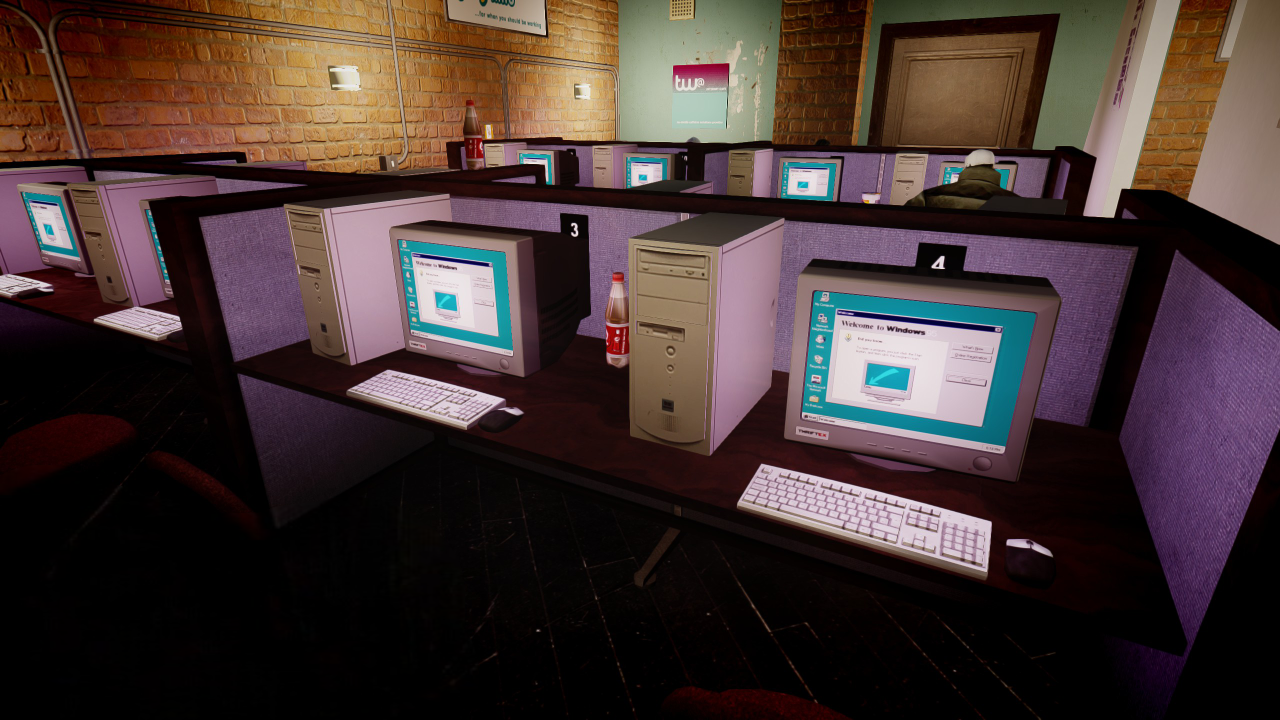Let's dial back the clock. It's the late 1980s or maybe the early 1990s. The personal computer is starting to assert itself, but the 'online world' as we know it doesn't exist yet. Forget slick web browsers; think blinking cursors and text-based interfaces. You sit down at your PC, maybe an early IBM compatible common in offices or universities here in India, or perhaps a beloved Commodore 64 or Apple II at home. You fire up your terminal software – Telix, Procomm Plus, or something similar. You consult a list of local phone numbers, handwritten or printed from a user group newsletter. You type the command: ATDT followed by a number. Your modem springs to life, emitting that now-iconic dial-up handshake sequence – the screeches and buzzes that signify a connection attempt. A moment later, success! Your screen clears, replaced not by graphics, but by text, perhaps a welcome message rendered in surprisingly colorful ANSI art. Using only your keyboard, you navigate menus: [M]essage bases, [F]ile areas, [D]oor games... You're connected, not to a global network, but to one specific computer, likely running in someone else's home or a small office nearby. Welcome to the world of the Bulletin Board System (BBS) – the vibrant, local, text-based precursor to the modern online community.
The Genesis Modem (Late 1970s - Early 1980s): "Hobbyists Hack Together Connection"
[ERA IMAGE SUGGESTION: A black and white photo or early screenshot simulation of the CBBS interface, emphasizing its text-only nature.]
The story of the BBS begins, fittingly, with hobbyists driven by a desire to connect and share. In the harsh Chicago winter of 1978, computer enthusiasts Ward Christensen and Randy Suess had an idea. Members of their local computer club (CACHE - Chicago Area Computer Hobbyists' Exchange) needed an easier way to share information and software than physically exchanging floppy disks or tapes. During a blizzard that February, they brought their idea to life: the Computerized Bulletin Board System (CBBS).
Running on an S-100 microcomputer with a modem attached to a phone line, CBBS allowed users to dial in remotely using their own computers and terminal software. Once connected (one user at a time!), they could leave messages for others, read existing messages, and upload or download files. It was revolutionary – the first public dial-up system of its kind, a digital corkboard accessible via telephone. It was built by enthusiasts, for enthusiasts, running on the limited hardware of the day (like early Altairs, Apple IIs, TRS-80s). This wasn't a commercial venture; it was a community project born from necessity and passion.
Tech Spotlight: The First BBS (CBBS)
- Launched: February 16, 1978, in Chicago.
- Creators: Ward Christensen and Randy Suess.
- Technology: S-100 bus microcomputer, modem, custom software. Accessed via terminal program over a single phone line.
- Functionality: Primarily focused on posting and reading text messages (like a forum), plus basic file transfers (Christensen also developed the XMODEM file transfer protocol around this time).
- Access: One user could connect at a time via dial-up modem.
- Significance: Established the fundamental concept of the Bulletin Board System – a central computer accessible remotely via modem for community messaging and file exchange.
Milestone Markers
- Late 1970s: Microcomputers (Apple II, TRS-80, PET) become available but lack easy ways to network or share software remotely.
- 1978 (February 16): CBBS goes online, considered the first public BBS.
- Early 1980s: Inspired by CBBS, hobbyists begin setting up their own BBSs on various platforms.
Parallel Developments
- Late 1970s: Hobbyist computer clubs flourish. Early forms of email exist on large institutional networks (like ARPANET) but are inaccessible to the public.
- Early 1980s: IBM PC launches (1981). Modems slowly increase in speed (300 baud, 1200 baud).
User Experience Snapshot
Imagine being one of the first users dialing into CBBS. Using a clunky terminal program, typing commands, reading text messages slowly scroll onto your screen. There were no graphics, no mouse pointers. It was purely text, yet it felt like magic – connecting your computer directly to another, sharing information across phone lines. It was a glimpse into a connected future.
The Growing Network (Mid-1980s - Early 1990s): "Local Hubs & The FidoNet Chain"
[ERA IMAGE SUGGESTION: A conceptual diagram showing multiple BBS icons linked together via dotted lines representing FidoNet connections.]
Inspired by CBBS, the BBS phenomenon exploded throughout the 1980s. Enthusiasts – known as System Operators or SysOps – set up boards running on Commodore 64s, Ataris, Apple IIs, and increasingly, IBM PC compatibles. These BBSs became digital hubs for local communities, often centered around specific interests like gaming, programming, particular computer brands, or sci-fi.
The core features standardized:
- Message Boards: Threaded discussion forums for public conversations.
- File Areas: Libraries for uploading and downloading software (especially shareware), text files, utilities, and emerging digital art forms like ANSI art.
- Door Games: External programs run via the BBS software, allowing users to play text-based or ANSI-graphic games like Legend of the Red Dragon (LoRD), TradeWars 2002, Usurper, etc., often turn-based and played against other users of the same BBS.
The biggest limitation was isolation; dialing long-distance was expensive, so most users stuck to local boards. This changed dramatically with the advent of FidoNet, created by Tom Jennings in 1984. FidoNet wasn't real-time internet, but a clever store-and-forward network. Participating BBS SysOps configured their systems to automatically call other FidoNet nodes (usually late at night during the "Zone Mail Hour" when phone rates were cheapest) and exchange compressed bundles ("packets") of messages. This allowed users to send private email (NetMail) and participate in public discussion groups (Echomail) with users on thousands of other BBSs worldwide, albeit with a delay of hours or days for messages to propagate across the network. FidoNet connected these myriad local islands into a vast, decentralized archipelago. During this time, the first BBSs also started appearing in India, run by dedicated hobbyists or institutions like IITs, connecting the small but growing community of early PC users and tech enthusiasts.
Tech Spotlight: FidoNet Networking
- Launched: 1984 by Tom Jennings.
- Concept: A decentralized, store-and-forward network connecting individual BBSs.
- Mechanism: BBSs automatically dialed each other during pre-arranged off-peak hours ("Zone Mail Hour") to exchange compressed packets of messages (NetMail and Echomail).
- Reach: Grew to connect tens of thousands of BBSs globally at its peak.
- Impact: Created a global messaging network for BBS users long before widespread public internet access. Fostered large-scale discussion communities (Echomail forums).
- Significance: Demonstrated the power of decentralized, peer-to-peer networking and provided a vital communication backbone for the BBS world.
Milestone Markers
- Mid-1980s: Proliferation of BBSs run by hobbyists on various home computers. Popular BBS software packages emerge (e.g., WWIV, Fido BBS, PCBoard).
- 1984: Tom Jennings creates FidoNet.
- Late 1980s/Early 1990s: FidoNet grows exponentially, connecting thousands of BBSs globally. Door games become highly popular. Early Indian BBSs established (e.g., CiX in Calcutta).
Parallel Developments
- Mid-Late 1980s: Modem speeds increase (2400, 9600, 14.4k bps). Shareware software distribution model thrives, often using BBSs as primary channels. PC compatibles become dominant.
- Early 1990s: Windows 3.x gains popularity, but many BBS users still operate in DOS using terminal programs like Telix, Qmodem, or Procomm Plus.
User Experience Snapshot
Dialing into your favorite local BBS, being greeted by a colorful ANSI art welcome screen. Checking the message boards for new posts in your favorite SIG (Special Interest Group). Spending hours downloading that multi-part shareware game archive via ZModem, praying the connection wouldn't drop. Getting hopelessly addicted to a Door game like LORD. Sending a FidoNet message to someone across the country and knowing it would arrive... eventually. This was the rich, text-based lifeblood of the online world for many.
The Golden Age Culture (Late 1980s - Mid 1990s): "Where Everybody Knew Your Handle"
[ERA IMAGE SUGGESTION: A vibrant, complex ANSI art screen, perhaps a BBS menu or logo.]
This period represented the peak cultural significance of the BBS. Before the anonymity and scale of the modern internet, BBSs fostered unique, often tightly-knit communities.
- Identity: Users were known by their "handles" or pseudonyms, creating distinct online personas separate from their real-world identities. Reputation within a specific BBS community mattered.
- Community: Most BBSs had a strong local flavor, as users were often dialing local numbers. This led to real-world friendships and even "BBS Meets" where users and the SysOp would gather offline. FidoNet Echomail forums created larger, topic-based communities spanning multiple BBSs, but still felt smaller and more focused than modern internet forums.
- The SysOp: The System Operator was crucial. They were the owner, administrator, moderator, content curator, and often the central personality of the board. They set the rules, managed users, fixed technical issues, and fostered the community's tone – a demanding hobby requiring significant time and often personal expense (phone lines!).
- Content: Message boards were the heart, with discussions ranging from technical support and programming to sci-fi, gaming, politics, and local events. File areas were treasure troves of shareware, freeware utilities, text files (FAQs, stories, articles), and the unique digital art form of ANSI art. Door games provided interactive entertainment.
- Etiquette: A distinct "BBS Etiquette" developed regarding message posting, file uploads (maintaining upload/download ratios), behavior towards the SysOp and other users.
- Subcultures: Specialized BBSs catered to specific interests. Unfortunately, this also included boards dedicated to illegal activities like software piracy ("warez") and hacking/phreaking discussions, which drew negative attention and occasional law enforcement raids.
For a generation of tech enthusiasts, logging into their favorite BBSs was the primary way they experienced online interaction, community, and information exchange.
Tech Spotlight: ANSI Art & Door Games
- ANSI Art: Using IBM extended ASCII characters and ANSI escape codes to create colorful text-based graphics, menus, logos, and animations within the limitations of terminal displays. Became a defining aesthetic of the BBS era.
- Door Games: External programs launched from the BBS interface, allowing turn-based multiplayer or single-player games. Popular examples: Legend of the Red Dragon (LORD), TradeWars 2002, Solar Realms Elite, Barren Realms Elite. Users typically got a limited number of turns per day.
- Significance: These features enriched the basic text interface, adding visual flair (ANSI) and interactive entertainment (Doors), contributing significantly to BBS culture and user engagement.
The Winds of Change (Mid-1990s): "AOL, ISPs & The World Wide Web Beckons"
[ERA IMAGE SUGGESTION: A graphic showing arrows pointing users away from a BBS icon towards icons for AOL, CompuServe, and a generic Web Browser.]
The vibrant ecosystem of independent BBSs began to face existential threats in the mid-1990s.
Commercial Online Services: Giants like America Online (AOL), CompuServe, and Prodigy launched massive marketing campaigns, offering easy-to-use graphical interfaces, curated content (news, shopping, chat rooms), and simplified access, often via their own dial-up networks. They appealed heavily to less technical users who found traditional BBSs intimidating or complex. The familiar "You've Got Mail!" sound drew millions away from the text-based world.
Internet Service Providers (ISPs) & The Web: The most significant challenge came from the rise of affordable, public Internet Service Providers (ISPs). When VSNL launched public dial-up internet access in India in August 1995, it mirrored a global trend. ISPs offered connection not just to one computer, but to the entire global internet. This meant access to:
- Email: Global, standardized email, far faster than FidoNet's NetMail.
- Usenet: Tens of thousands of global discussion newsgroups, dwarfing FidoNet's Echomail.
- IRC (Internet Relay Chat): Real-time, multi-user global chat.
- World Wide Web: Accessed via graphical browsers like Netscape Navigator (1994), the Web offered hyperlinked documents, images, sounds, and eventually video – a vastly richer experience than text-based BBS interfaces.
Compared to the boundless possibilities of the internet and the user-friendliness of AOL, the single-line, text-only, often local BBS started to seem quaint, slow, and isolated.
The Fading Carrier Signal (Late 1990s - Early 2000s): "Migrating to the Mainstream"
[ERA IMAGE SUGGESTION: A dusty, unplugged modem sitting on a shelf.]
The shift was rapid. As users discovered the vastness of the World Wide Web and the convenience of flat-rate ISP accounts (which often became cheaper than potential long-distance BBS calls), they migrated away from dialing individual BBSs.
SysOps saw their call volumes plummet. The communities they had nurtured began to dissolve as users moved to web forums, Usenet, or AOL chat rooms. The significant time, effort, and cost involved in running a BBS (maintaining hardware, software, multiple phone lines for multi-user boards, moderating content) became increasingly hard to justify for a shrinking audience. Many SysOps reluctantly pulled the plug on their systems. FidoNet, while technically functional, saw its traffic and relevance decline drastically as internet email and newsgroups took over. The golden age of the dial-up BBS was over.
The Telnet Renaissance & Legacy (Present): "Still Dialing In (Sort Of)"
[ERA IMAGE SUGGESTION: A screenshot of a modern Telnet client like SyncTERM connecting to a colorful ANSI-based BBS welcome screen.]
While the dial-up modem fell silent for most BBSs, the story didn't completely end. A dedicated community of hobbyists and enthusiasts kept the spirit alive. Today, hundreds, perhaps thousands, of BBSs are still running, but with a crucial difference: they are typically accessed via Telnet over the modern internet, not via phone lines and modems.
Using Telnet client software (like SyncTERM, NetRunner, PuTTY, or dedicated mobile apps), users can connect to BBS addresses and port numbers, often experiencing interfaces – complete with ANSI art and text menus – that are remarkably faithful to the originals. It's a living museum and a vibrant niche community celebrating the text-mode era.
The legacy of the BBS era, however, extends far beyond these Telnet revivals. BBSs were the crucible where much of online culture and technology was forged:
- Online Forums: Message bases were the direct ancestors of every web forum, Reddit subreddit, and Facebook group.
- File Sharing: BBS file areas pioneered online software distribution (especially shareware) and file exchange.
- Online Identity: The use of handles/pseudonyms and building online reputations started here.
- Community Moderation: The SysOp role established the principles of online community management and moderation.
- Decentralized Networking: FidoNet was a groundbreaking demonstration of a resilient, peer-to-peer, store-and-forward network.
BBSs were the primordial soup from which much of the modern internet evolved. They were built not by large corporations, but by passionate individuals fostering communication and community in the earliest days of connected computing.
Full Circle Reflections
Before social media streams and the infinite scroll, there was the bulletin board system. A dial-up number, a screeching modem handshake, and a blinking text cursor were the gateways to a world of shared messages, downloadable files, and nascent digital communities. Run by dedicated SysOps often from their own homes, BBSs like CBBS, the thousands connected by FidoNet, and local Indian boards like CiX, were the intimate, often quirky, digital town squares of their time.
They taught us how to communicate online, how to build communities around shared interests, how to share software (for better or worse), and how to navigate text-based virtual spaces. The rise of graphical online services and the boundless expanse of the World Wide Web inevitably rendered the classic dial-up BBS obsolete for the masses. Yet, their spirit endures – in the dedicated hobbyists keeping Telnet BBSs alive, and more profoundly, in the DNA of virtually every online forum and community platform we use today. The BBS wasn't just a forgotten technology; it was the crucial first draft of our online world, typed out one character at a time.
The Heritage Impact: The First Online Communities
The BBS era left a foundational legacy:
- Pioneered Online Forums: Created the model for asynchronous online discussions.
- Early File Sharing Hubs: Established methods for uploading and downloading digital files.
- Shareware Distribution: Was the primary channel for the successful shareware software model.
- Developed Online Culture: Fostered concepts of online identity (handles), emoticons (text-based), netspeak, and community moderation (SysOps).
- Demonstrated Decentralization: FidoNet proved the viability of large-scale, resilient, store-and-forward networks without central control.
- Training Ground: Many internet pioneers and developers got their start running or using BBSs.
They were the original social networks, built on passion, modems, and the simple desire to connect.
FAQ: BBS Basics
- What was a BBS (Bulletin Board System)? A BBS was a computer system, typically run by a hobbyist (SysOp) on a personal computer, that allowed users to connect remotely using a modem over phone lines. Users could read and post messages on public forums, exchange private mail, download/upload files (like shareware or ANSI art), and often play text-based online games ("Door games").
- When were BBSs popular? They were most popular from the mid-1980s through the mid-1990s, before widespread public access to the internet and the World Wide Web became common.
- How did users connect to BBSs? How did FidoNet work? Users connected by having their computer's modem dial the specific phone number of the BBS. Usually, only one user could connect at a time per phone line. FidoNet was a separate network that allowed participating BBSs to automatically call each other (usually late at night) to exchange bundles of messages (email and forum posts), creating a global, delayed communication network.
- Why did BBSs decline? They were largely replaced by the rise of commercial online services (like AOL and CompuServe) which offered easier graphical interfaces, and more significantly, by the availability of affordable dial-up Internet Service Providers (ISPs) that gave users access to the global internet (Email, Usenet, World Wide Web), which was far larger, faster (in terms of real-time access), and more graphically rich.
- Do BBSs still exist today? Yes! While extremely rare in their original dial-up form, hundreds (or thousands) of BBSs are still operated by hobbyists today. They are typically accessed over the modern internet using a Telnet client instead of a modem, often preserving the classic text-based interfaces and ANSI art.




